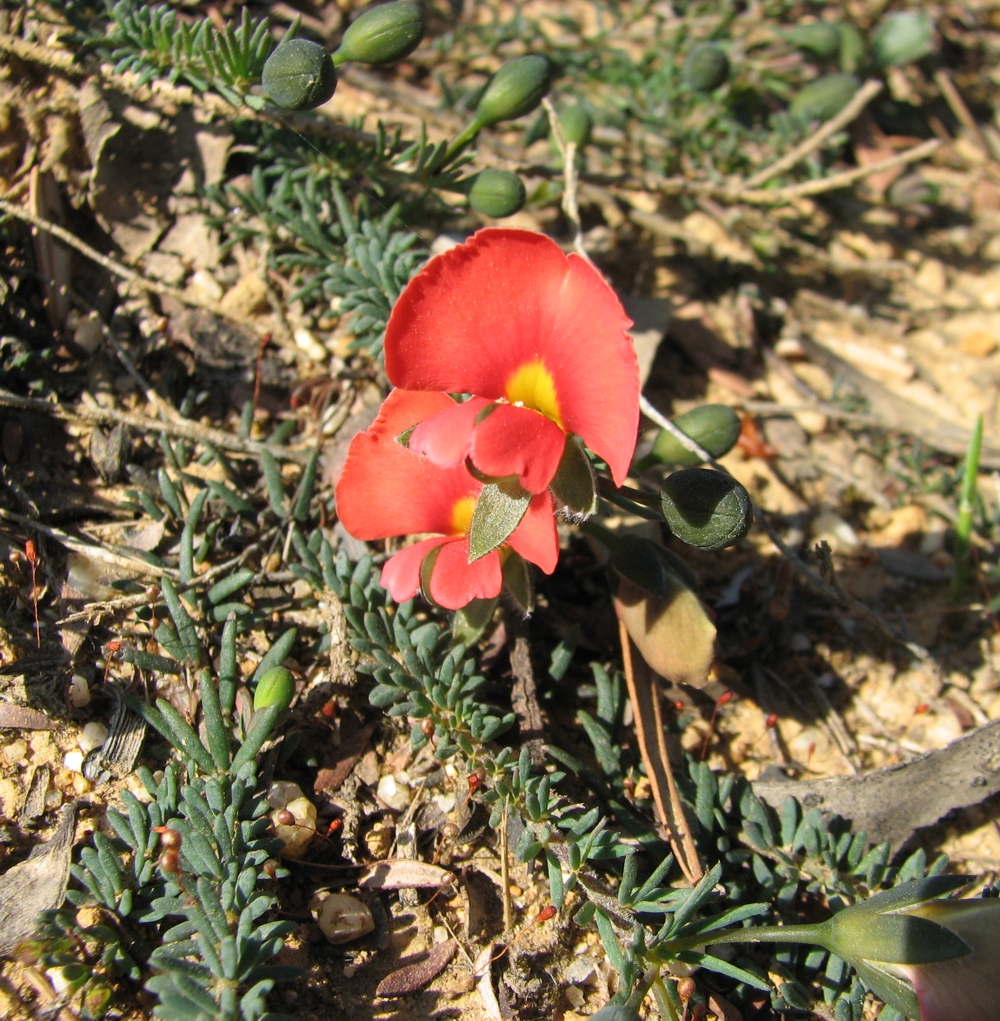|
Gompholobium Polymorphum
''Gompholobium polymorphum'' is a species of flowering plant in the family Fabaceae and is endemic to the south-west of Western Australia. It is a bushy, straggling shrub or climber with cylindrical leaves with longitudinal grooves and yellow, red or orange, pea-like flowers with yellow, red or orange marks. Description ''Gompholobium polymorphum'' is a bushy, straggling shrub or climber that typically grows to a height of . Its leaves are cylindrical with one or two longitudinal grooves on the lower surface, long and wide. The flowers are usually yellow, red or orange with yellow, red or orange markings, borne on glabrous pedicels long with bracteoles long, attached. The sepals are glabrous, long, the standard petal long, the wings long and the keel long. Flowering occurs from September to January and the fruit is a pod about long and wide. Taxonomy ''Gompholobium polymorphum'' was first formally described in 1811 by Robert Brown in ''Hortus Kewensis''. The sp ... [...More Info...] [...Related Items...] OR: [Wikipedia] [Google] [Baidu] |
Gompholobium Polymorphum - Flickr - Kevin Thiele (2)
''Gompholobium'', commonly known as glory peas or wedge-peas, is a genus of plants in the pea family Fabaceae and is endemic to Australia. Most species have compound leaves composed of three leaflets and all have ten stamens which are free from each other and a distinctive arrangement of their sepals. Description Plants in the genus ''Gompholobium'' mostly have leaves composed of three separate leaflets but some species have simple leaves and others have pinnate leaves. The leaflets are arranged alternately along the stems and are usually narrow and have smooth edges. The flowers are usually arranged in groups on the ends of the branches, sometimes singly or in pairs. The sepals form a short tube with five lobes longer than the tube. The large "standard" petal at the back of the flower is circular to kidney-shaped and is larger than the other petals. There are ten free stamens and the ovary is glabrous. The fruit is an oblong to almost spherical legume containing two to many ... [...More Info...] [...Related Items...] OR: [Wikipedia] [Google] [Baidu] |
